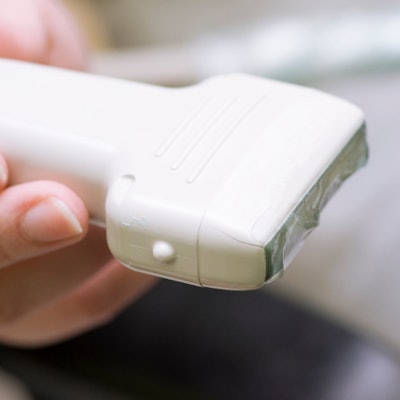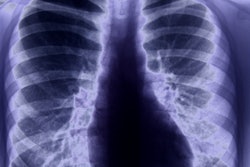
CT may be the gold standard for diagnosing complicated pneumonia, but lung ultrasound may be a viable first choice for patients in the emergency department, according to a study published on February 14 in Ultrasound in Medicine & Biology.
The researchers found that ultrasound had comparable rates of sensitivity and specificity to CT among patients with suspected pneumonia who visited an emergency department. They suggested ultrasound could be a good first imaging modality for patients with other signs of pneumonia.
"We have found that bedside [lung ultrasound] is a highly sensitive, specific, and accurate test for the diagnosis of pneumonia," wrote the authors, led by Dr. Canbahar Sezgin from the department of emergency medicine at Hitit University in Corum, Turkey.
Timely chest imaging is critical for patients who may have pneumonia, as a delay in antibiotic treatment could result in worse outcomes. Although CT is the ideal modality for diagnosing pneumonia, it's not always timely and feasible in an emergency setting. The researchers wondered whether bedside ultrasound scans could be a viable first-step alternative.
To find out, they enrolled 125 patients with suspected pneumonia who visited a university hospital between July 2015 and April 2016. Trained clinicians performed both bedside lung ultrasound and posteroanterior and lateral chest x-rays for all patients. They also used CT for 61 patients who needed further evaluation.
Out of the 125 patients enrolled in the study, 101 were diagnosed with pneumonia based on clinical findings and imaging results. Lung ultrasound findings correctly suggested pneumonia in all but two of the patient cases.
Compared with patients diagnosed through CT, ultrasound had a sensitivity of 98%, specificity of 92%, and positive predictive value of 98%. The findings were even stronger when compared to patients diagnosed based on clinical findings. For these patients, ultrasound had a sensitivity of 98%, specificity of 96%, and positive predictive value of 99%.
"The ability to examine immobile patients using [lung ultrasound] is one of the reasons for its high sensitivity in the diagnosis of pneumonia," the authors wrote.
Lung ultrasound also fared much better than x-ray, another common first imaging modality for emergency department patients. Ultrasound had a false-negative rate of 2%, compared with 12% for x-ray for patients diagnosed based on clinical findings. Furthermore, x-ray missed 12 cases of pneumonia that lung ultrasound found.
"We found that the diagnostic accuracy of [lung ultrasound] is very high, and the procedure can be easily performed at the patients' bedside," the authors wrote. "The diagnostic accuracy of posteroanterior chest x-ray examinations is reduced because of patient immobility."
While the study had a limited number of patients, the authors noted that their findings support the use of bedside ultrasound for emergency department patients with suspected pneumonia. This is especially true for patients for whom consolidation was not observed in an ultrasound scan but who had B-3 line positivity or a diffuse interstitial pattern.
"The most important contributions of this study are the results obtained by examining the sensitivity, specificity, and accuracy of [lung ultrasound] for the diagnosis of pneumonia in the presence of all other findings apart from consolidation," Sezgin and colleagues concluded. "Specifically, this study revealed a significantly higher sensitivity associated with B-line and diffuse interstitial pattern positivity in cases in which consolidation was not observed with [lung ultrasound.]"




















